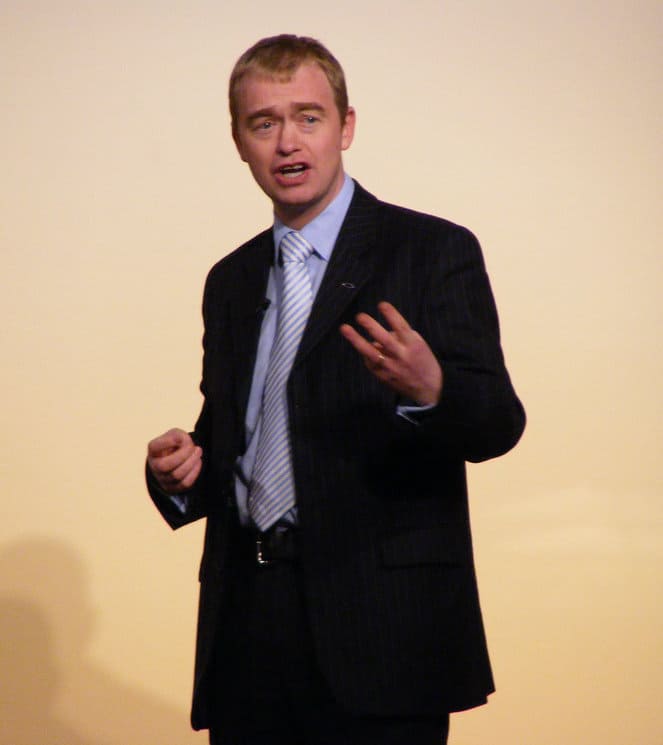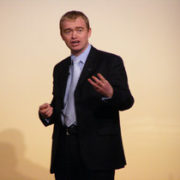Public narrative: case study from Tim Farron
Public narrative is right at the top of our agenda here in Brussels. It is a really effective way to build a compelling message if you are working for the public good.
It is no secret that people who work in politics, campaigning, and media often use storytelling as a way of communicating their values and reinforcing those of a particular target audience. Done well, it is an extremely effective technique for building empathy, inspiring a community to act and appealing to a set of values which many identify with.
On Thursday night’s Question Time UK Liberal Democrat Leader Tim Farron gave us one such example.

UK Liberal Democrat Leader Tim Farron
In fact, he gave us three.
Asked by an audience member whether he felt Nigel Farage would be a good or ‘terrifying’ British Ambassador to the US, Mr Farron used his 1 minute 20 answer to outline a form of public narrative. This is a communication technique pioneered by former Civil Rights activist Marshall Ganz, in which the speaker links the personal with the political through a short speech or story.
Farron’s story followed this three-layer, interlinking narrative structure:
- A story of me
- A story of my people
- A story of my country
Tim Farron said that Nigel Farage does not speak for British values #bbcqt https://t.co/l5ZyF0ZG3G
— BBC Question Time (@bbcquestiontime) 24 November 2016
To analyse each part in turn:
Public narrative part 1: A story of me
Early on Mr Farron (by his own admission) plays the working class card (he’s the only working class political leader in the UK). He goes on to say that while his constituency voted to ‘Remain’ he’s from a ‘few miles south in Lancashire’ and knows many people who voted to leave the EU on 23rd June. By painting a visual picture of his local roots, he establishes his credibility and authenticity, thus pre-empting accusations that he is one of the out of touch pro-EU ‘elites’ who don’t understand the concerns of the working class, particularly in relation to Brexit. The message from this story is: I understand why people voted the way they did.
This sets the audience up for the next part of the tale.
Public narrative part 2 : A story of my people
Perhaps counter intuitively for some Mr Farron then chooses to talk about the 52% of the people who voted to leave the EU (many of whom live in constituencies close to where he grew up). He describes them as almost all ‘outward looking, decent, tolerant people who just happened to disagree with me on 23rd June’. The buzzwords will always make a liberal base purr but in this case they were designed to separate British values from Brexit and create a strong contrast between Farron, the people he knows and Nigel Farage, who is identified with ‘stoking racism and division’. By concentrating on common values rather than common interests, Mr Farron then sets up the final part of his story.
So the message here is: my people may disagree with me but they still share my values more than Nigel Farage.
Public narrative part 3: A story of my country
This is the climax. Farron asserts that Nigel Farage ‘does not speak’ for the majority of British people whether they voted ‘Leave’ or ‘Remain’. By repeating his earlier tricolon that ‘the British values’ he wants to see projected around the world are those of being ‘outward looking, decent and tolerant’, he links the local story of people in the North of England with the principles by which the UK should be known and perceived around the world. A stern reprimand (accompanied by a finger jab) in the direction of an audience heckler that ‘he (Nigel Farage) may speak for you but he doesn’t speak for the overwhelming majority of British people’ or ‘the Britain I know’ injects some passion and anger into the story, ensuring it ends on a high note.
This was one of the strongest pieces of pro-EU identity-based messaging I have seen throughout the Brexit debate. Judging from the audience’s reaction they were not only in agreement with Tim Farron but many also felt that it was their own story being articulated back at them.
And all in 1 minute 20 seconds.
If you would like help building a public narrative message for yourself, for a group or for an organisation we can help. This week we piloted a specialist Public Narrative Workshop in Brussels and would welcome a chat with anyone who thinks this might help their organisation.




Leave a Reply
Want to join the discussion?Feel free to contribute!